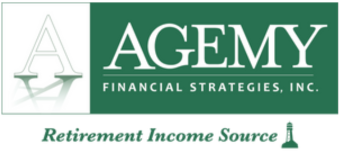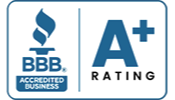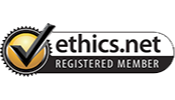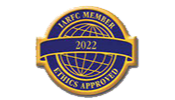Last Chance to Max Out 401ks and Roth IRAs
Many Americans nearing retirement may think they have all their I’s dotted and t’s crossed. But what many fail to recognize is the importance of maximizing their 401(k)s and IRAs. Here’s how to make sure you’re not missing out on your well-deserved retirement money.
If you’re reading this, chances are you’re already contributing to your 401(k) account. That’s great! But with the IRS increasing the annual contribution limits in 2023 for most 401ks and Roth IRAs, to $22,500 from $20,500, most retirees or people nearing retirement might feel pressure to put more money into retirement savings.
If you haven’t looked at your account in a while or have never checked it out before, now is a great time to check out how much you’re contributing and take stock of whether or not that amount is enough. If it isn’t—or if you’ve always wanted to contribute more but haven’t been able to—it might be worth considering upping your contributions now that the ceiling has increased.
Here is what you need to know about maxing out your 401ks and Roth IRAs.
401(k) Contribution Limits for 2023
In order to combat rising inflation, the IRS has increased the maximum contribution limit for 401(k)s to $22,500 in 2023. However, the IRS did not raise catch-up contributions for traditional or Roth IRAs.
The biggest take away from this is people above the age of 50 are eligible for catch-up contributions to their 401(k). This means that this age group can contribute above the $22,500 limit. The IRS also increased the catch-up contribution value in 2023, from $6,500 in 2022 to $7,500. In total, employees above the age of 50 can contribute up to $30,000 to their 401(k).
Should you be maximizing your contributions? The savings would be wild to pass up. Let’s take a look at IRA and Roth contributions for 2023 before we dive in.
IRA and Roth IRA Contribution Limits for 2023
The annual contribution limit for traditional IRAs and Roth IRAs is increasing in 2023, which means you’ll be able to save more for retirement this year.
For people who have a retirement account outside of their employer, the limits are going up for both traditional IRAs and Roth IRAs. In 2023, eligible individuals can contribute up to $6,500, up from $6,000, to their IRAs.
Roth IRAs have income limits, so individuals making above a certain income threshold are eligible for reduced contributions. Individuals who make above the upper range of that threshold are not eligible at all. In 2023, the income phase-out range for single filers is $138,000 to $153,000. For married couples filing jointly, it’s $218,000 and $228,000.
Should You be Maximizing Your 401(k) and IRA Contributions?
Having a 401(k) or IRA account puts you in a better position for retirement compared to many Americans. If you’re wondering if you need to contribute more money to your 401(k) or IRA now, it depends on your finances.
For example, If your employer offers to match a percentage of your contributions, your first priority should be contributing enough to earn the match. By not taking advantage of the match, you’re essentially losing out on free money.
After that, you’re ready to invest your money. You can choose from a number of different investment vehicles, such as a Roth IRA. The important thing is to start saving early and to contribute consistently. The earlier you begin investing, the longer time your money has to grow through compound interest.
Ready to Retire?
Maybe not quite, there are many ways to invest outside of your 401(k) and IRA:
– Upgrade Your Savings: Stashing your extra money in a certificate of deposit (CD), high-yield savings account, or money market account might be the least risky investment you can make.
– HSA: Some experts say an HSA is one of the most tax-favored, yet underused, investment vehicles.
– A 529 savings plan is a tax-advantaged savings account designed to encourage saving for qualified future education costs, such as tuition, fees, and room and board. Much like a 401(k) or IRA, a 529 savings plan allows you to invest in mutual funds or similar investments.
– Open a Brokerage Account: If you’ve paid off your credit card debt, established an emergency fund, and exhausted all your tax-advantaged accounts, you can open a regular old brokerage account to squirrel away some more money.
– Invest: Whether in real estate or stocks, strategic investing could be a good place to tap into if you are looking to diversify your portfolio.
Please note: Wherever you put your money, remember that each type of investment comes with drawbacks. You should understand your risk tolerance and be comfortable with the potential pitfalls involved before getting started with a new investment. Asset diversification is a way to offset the potential risks — do not put all your eggs in one basket.
Final Thoughts
There are many different strategies you can use to max out your 401(k) and Roth IRA accounts. Starting in 2023, you’ll be able to contribute more to your 401(k) and other retirement accounts than you could before.
With this in mind, it’s important to have a financial advisor you can trust. At Agemy Financial Strategies, we specialize in investment strategies and retirement planning. These two go hand in hand when it comes to planning your financial future in order for you to enjoy your golden years.
Have questions about retirement planning or building up your retirement accounts? Contact us today.







Leave a Reply
Want to join the discussion?Feel free to contribute!